The Role of Algorithmic Trading in Cryptocurrency Markets
In the ever-evolving landscape of cryptocurrency, the role of algorithmic trading has emerged as a game-changer. Imagine a world where trades are executed at lightning speed, decisions are driven by data rather than emotions, and market inefficiencies are systematically exploited. That’s the power of algorithmic trading! This innovative approach leverages complex algorithms to automate trading, allowing for swift execution and strategic decision-making in a market known for its volatility and rapid price fluctuations.
As we dive deeper into the significance of algorithmic trading, it becomes clear that it is not just a trend but a fundamental shift in how trading is conducted in cryptocurrency markets. Algorithmic trading systems analyze vast datasets, identify trends, and execute trades at optimal prices, all while minimizing human error. This technology is reshaping the trading landscape and providing both individual traders and institutional investors with a competitive edge.
But why is algorithmic trading particularly relevant in the cryptocurrency sphere? The answer lies in the unique characteristics of the crypto market. Unlike traditional markets, cryptocurrency operates 24/7, creating a constant stream of trading opportunities. This non-stop environment demands a trading strategy that can keep up with rapid changes. Here, algorithmic trading shines, offering traders the ability to react instantly to market movements. With algorithms capable of processing information at speeds no human can match, traders can capitalize on fleeting opportunities that would otherwise be lost.
Moreover, the integration of algorithmic trading into cryptocurrency markets has led to increased market liquidity. By automating trades, these systems ensure that assets can be bought or sold without causing drastic price changes, which is crucial for maintaining a stable market environment. In essence, algorithmic trading not only enhances the trading experience for individual users but also contributes to the overall health of the market.
As we explore further, we will uncover the myriad benefits that algorithmic trading brings to the table, including efficiency, risk management, and the ability to leverage data analytics. However, it's essential to also consider the challenges that accompany this technology, such as market volatility and regulatory issues. Understanding both sides will provide a comprehensive view of the role algorithmic trading plays in shaping the future of cryptocurrency markets.
- What is algorithmic trading? - Algorithmic trading refers to the use of computer algorithms to automate trading decisions and execute trades in financial markets.
- How does algorithmic trading benefit cryptocurrency traders? - It increases trading efficiency, reduces emotional decision-making, and allows for rapid analysis of large datasets to identify trading opportunities.
- What are the risks associated with algorithmic trading? - Risks include technical failures, market volatility, and regulatory challenges that can impact trading outcomes.
- Is algorithmic trading suitable for all traders? - While it offers significant advantages, it may not be suitable for all traders, particularly those who prefer manual trading or lack technical expertise.
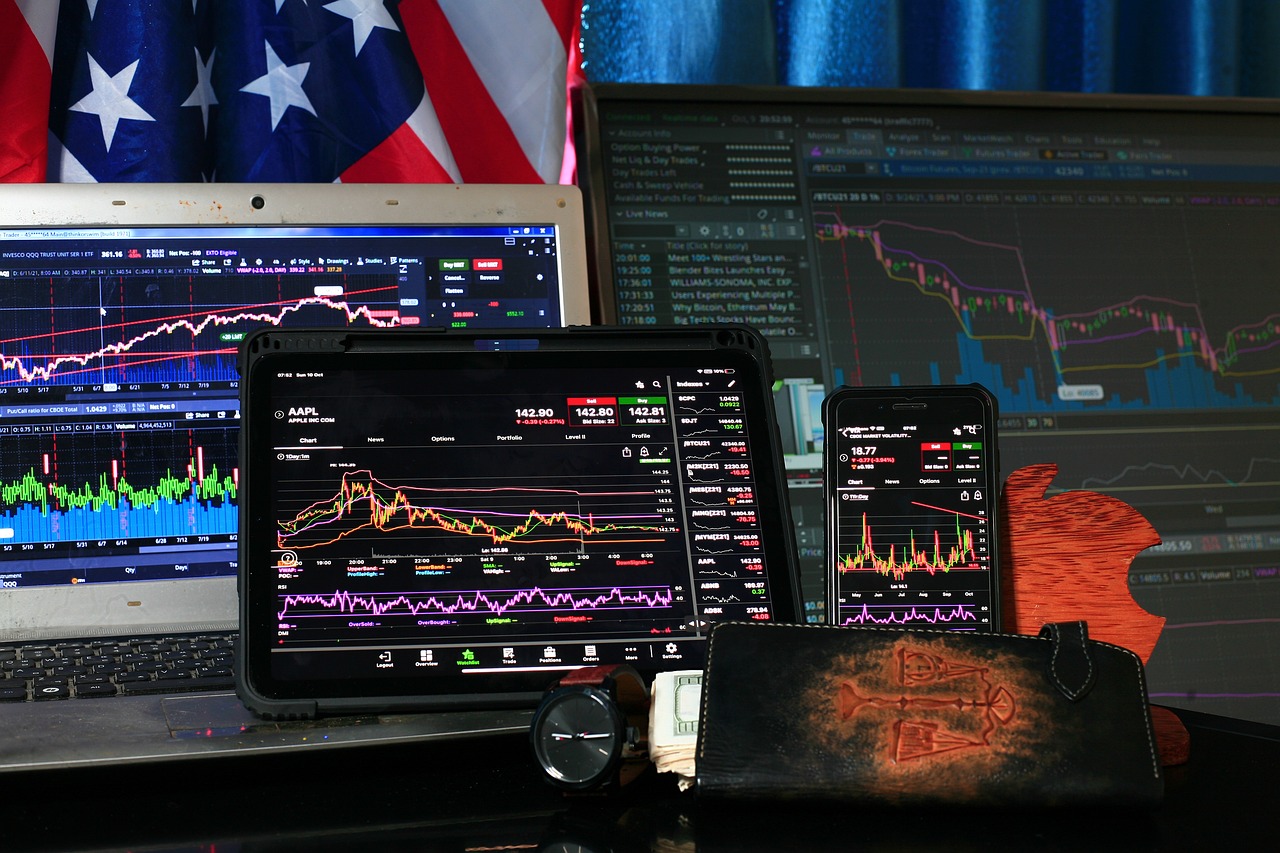
Understanding Algorithmic Trading
Algorithmic trading, at its core, is the practice of using computer programs and algorithms to execute trades in financial markets. Imagine a highly skilled trader who can analyze market data, identify trends, and make split-second decisions—all without the emotional rollercoaster that often accompanies trading. That's essentially what algorithmic trading brings to the table. It allows for a level of precision and speed that human traders simply cannot match. In the world of cryptocurrency, where prices can fluctuate wildly in mere seconds, this capability becomes even more crucial.
The relevance of algorithmic trading in cryptocurrency markets cannot be overstated. With thousands of cryptocurrencies available and trading volumes reaching astronomical levels, the ability to automate trading strategies is not just a luxury; it's a necessity. Algorithms can execute trades based on predefined criteria, such as price thresholds or market trends, allowing traders to capitalize on opportunities that they might otherwise miss. For instance, an algorithm can be programmed to buy a certain cryptocurrency when its price drops by 5% and sell when it rises by 10%. This level of automation not only saves time but also helps in achieving a more disciplined trading approach.
To better understand how algorithmic trading works, consider the following key components:
- Market Data: Algorithms rely heavily on real-time market data, including price movements, trading volumes, and historical trends.
- Execution Algorithms: These are designed to determine the best way to execute a trade, minimizing costs and market impact.
- Risk Management: Algorithms can include risk management protocols to limit potential losses, ensuring that traders can navigate the volatile cryptocurrency landscape more safely.
In essence, algorithmic trading transforms the way traders interact with cryptocurrency markets. It reduces the emotional biases that often lead to poor decision-making, enhances the speed of execution, and allows for more sophisticated trading strategies. As we delve deeper into the benefits of algorithmic trading, it becomes clear that its impact on the cryptocurrency landscape is profound and far-reaching.

Benefits of Algorithmic Trading
When it comes to navigating the wild waters of cryptocurrency trading, algorithmic trading stands out as a lighthouse guiding traders towards safer shores. This innovative approach leverages the power of computer algorithms to execute trades at lightning speed and with remarkable precision. But what exactly makes algorithmic trading so advantageous in the bustling cryptocurrency markets? Let's dive into the myriad benefits.
First and foremost, one of the most significant advantages of algorithmic trading is its increased efficiency. Imagine trying to buy a hot new cryptocurrency during a massive price surge. If you were to do this manually, you'd be racing against the clock, and the chances of missing the optimal price are high. However, with algorithmic trading, trades are executed in milliseconds, ensuring that you never miss a golden opportunity. This speed is crucial in a market where prices can fluctuate wildly in a matter of seconds.
Moreover, algorithmic trading helps in reducing emotional trading. We all know how emotions can cloud judgment, especially in the high-stakes world of cryptocurrencies. Traders often find themselves caught in the throes of fear and greed, leading to irrational decisions. Algorithms, on the other hand, operate on data and predefined strategies, allowing for a more disciplined approach. This means that trades are executed based on logic rather than emotion, which can significantly improve overall trading performance.
Another remarkable benefit is the ability to analyze vast amounts of data quickly. Cryptocurrency markets generate an avalanche of data every second, and manually sifting through this information can be overwhelming. Algorithmic trading systems are designed to process and analyze these large datasets efficiently. They can identify patterns and trends that might be invisible to the naked eye. For instance, an algorithm can detect subtle price movements or correlations between different cryptocurrencies that could signal a buying or selling opportunity. This capability not only enhances decision-making but also provides a competitive edge in the market.
As mentioned earlier, the speed and efficiency of algorithmic trading cannot be overstated. In fact, the ability to execute trades in milliseconds can be the difference between profit and loss. For example, consider a scenario where a trader wants to capitalize on a sudden price dip of Bitcoin. With algorithmic trading, the order can be placed immediately, ensuring the trader secures the asset at the best possible price. This level of responsiveness is essential in a market characterized by rapid price swings.
Furthermore, algorithmic trading plays a pivotal role in enhancing market liquidity. By automating trades, these algorithms ensure that there are always buyers and sellers in the market. This liquidity is vital because it allows assets to be bought or sold without causing drastic price changes. Think of it like a well-functioning marketplace where goods are exchanged seamlessly. When liquidity is high, traders can enter and exit positions with ease, minimizing slippage and maximizing potential profits.
Lastly, let's not forget about the incredible data analysis capabilities of algorithmic trading systems. These algorithms can sift through mountains of historical and real-time data to identify trading opportunities. For example, they can analyze price movements, trading volumes, and even social media sentiment to gauge market trends. By leveraging this data, traders can make informed decisions rather than relying on gut feelings. It's like having a crystal ball that provides insights into the market's future movements!
In summary, the benefits of algorithmic trading in the cryptocurrency markets are profound. From increasing efficiency and reducing emotional trading to enhancing market liquidity and providing advanced data analysis, algorithmic trading is revolutionizing how traders operate. As the cryptocurrency landscape continues to evolve, embracing these technologies could be the key to staying ahead of the curve.

Speed and Efficiency
In the world of cryptocurrency trading, where every second counts, are not just advantages; they are necessities. Imagine standing at a bustling train station, watching as trains whiz by at lightning speed. If you're not quick enough to board, you miss your chance. Similarly, in the crypto markets, algorithmic trading acts as your ticket to ride the wave of market movements before they disappear. Algorithmic trading systems execute trades in milliseconds, far faster than any human trader could manage. This speed allows traders to capitalize on fleeting opportunities that arise in a market known for its volatility.
But what does this mean in practical terms? Consider the following:
- Instant Execution: Algorithms can place orders at the best available prices immediately, ensuring that traders don’t miss out on potentially profitable trades.
- Reduced Slippage: By executing trades quickly, algorithmic trading minimizes slippage—the difference between the expected price of a trade and the actual price. This is crucial in a market where prices can change in an instant.
- 24/7 Trading: Unlike traditional markets, cryptocurrency markets operate around the clock. Algorithmic trading systems can monitor and execute trades continuously, allowing traders to take advantage of global market movements without being tied to their screens.
Moreover, the efficiency of algorithmic trading extends beyond just speed. These systems are designed to analyze vast amounts of data quickly, identifying patterns and trends that human traders might overlook. For instance, an algorithm can scan thousands of cryptocurrencies and their trading volumes, price changes, and other indicators in seconds, providing insights that help traders make informed decisions. This data-driven approach not only enhances trading accuracy but also fosters a more strategic mindset, reducing the emotional rollercoaster often associated with trading.
In conclusion, the power of speed and efficiency in algorithmic trading cannot be overstated. As the cryptocurrency market continues to evolve, those who harness these capabilities will find themselves at a significant advantage, ready to seize opportunities that others might miss. In a landscape where time is money, algorithmic trading is a game-changer, making it easier than ever to navigate the complexities of cryptocurrency trading.
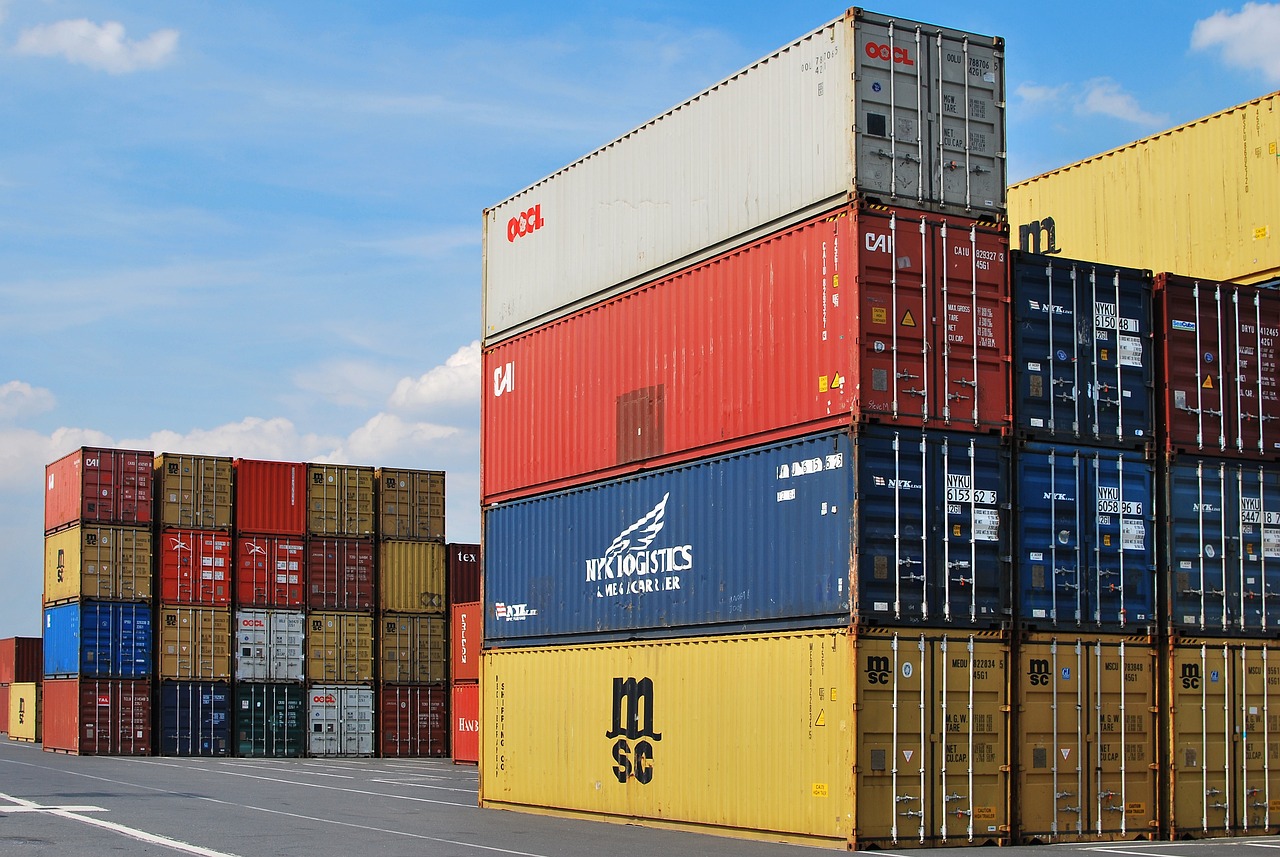
Market Liquidity
Market liquidity is a crucial aspect of trading in any financial market, and it becomes even more significant in the highly volatile world of cryptocurrencies. Simply put, liquidity refers to how easily an asset can be bought or sold in the market without affecting its price. In the context of algorithmic trading, enhanced liquidity is one of the most notable benefits, enabling traders to execute large orders without causing drastic fluctuations in the market. Imagine trying to sell a rare collectible; if there are few buyers, you might have to lower your price significantly. The same principle applies to cryptocurrencies, where algorithmic trading can help maintain price stability by ensuring that there are enough buyers and sellers at any given time.
One of the primary ways algorithmic trading contributes to liquidity is through automated trading strategies that consistently place buy and sell orders. These algorithms can monitor multiple exchanges simultaneously, identifying the best prices and executing trades in real-time. This not only enhances the overall trading volume but also narrows the bid-ask spread—the difference between what buyers are willing to pay and what sellers are asking. A tighter spread is beneficial for traders as it reduces the cost of entering and exiting positions.
Moreover, algorithmic trading can help reduce the impact of large trades on the market. When a trader wants to sell a significant amount of cryptocurrency, doing so manually can lead to a sharp decline in price due to the sudden increase in supply. However, an algorithm can break down the order into smaller chunks and execute them over time, minimizing the market impact. This method, often referred to as “smart order routing,” ensures that the trader gets the best possible price while maintaining market stability.
In summary, the role of algorithmic trading in enhancing market liquidity is multifaceted. It not only facilitates smoother transactions and better prices but also contributes to a more stable trading environment. As the cryptocurrency market continues to evolve, the importance of liquidity will only grow, making algorithmic trading an essential tool for traders looking to navigate this dynamic landscape.
- What is market liquidity?
Market liquidity refers to how easily an asset can be bought or sold without causing a significant price change.
- How does algorithmic trading improve liquidity?
Algorithmic trading improves liquidity by automating buy and sell orders, increasing trading volume, and narrowing the bid-ask spread.
- What is smart order routing?
Smart order routing is a technique used in algorithmic trading to break large orders into smaller ones to minimize market impact.
- Why is liquidity important in cryptocurrency trading?
Liquidity is crucial in cryptocurrency trading as it allows for smoother transactions and better price stability, especially in volatile markets.

Data Analysis
In the world of cryptocurrency trading, is not just a luxury; it's a necessity. Imagine trying to navigate a stormy sea without a compass—this is what trading without data analysis feels like. Algorithmic trading systems are equipped with sophisticated tools that allow them to sift through vast amounts of market data at lightning speed. These systems can analyze historical price movements, trading volumes, and even social media sentiment to forecast potential market trends. By leveraging these insights, traders can make decisions that are not only informed but also timely, which is crucial in the ever-fluctuating cryptocurrency landscape.
One of the most compelling aspects of algorithmic trading is its ability to identify patterns that may be invisible to the naked eye. For instance, algorithms can detect correlations between different cryptocurrencies or analyze how specific news events impact market prices. This is akin to having a superhuman ability to see connections and trends that most traders would miss. By employing advanced statistical methods and machine learning techniques, these algorithms can continuously learn and adapt, improving their predictive capabilities over time.
Moreover, the integration of big data analytics into algorithmic trading has revolutionized the way traders approach the market. With the ability to analyze data from multiple sources—like blockchain transactions, market news, and even global economic indicators—traders can develop a more comprehensive understanding of market dynamics. This holistic approach not only enhances trading strategies but also helps in risk assessment, allowing traders to make adjustments in real-time based on the latest data insights.
To illustrate the importance of data analysis in algorithmic trading, consider the following table that summarizes key data sources and their impact on trading decisions:
| Data Source | Type of Analysis | Impact on Trading |
|---|---|---|
| Historical Price Data | Trend Analysis | Identifies potential entry and exit points |
| Trading Volume | Liquidity Assessment | Determines market strength and potential price movements |
| Sentiment Analysis | Market Psychology | Predicts price movements based on trader sentiment |
| News Feeds | Event Impact Analysis | Helps in anticipating market reactions to news |
In conclusion, data analysis is the backbone of algorithmic trading in the cryptocurrency markets. By employing advanced algorithms that can process and analyze vast datasets, traders can gain a competitive edge. Not only does this lead to more informed trading decisions, but it also enhances overall market efficiency. As technology continues to evolve, the role of data analysis in algorithmic trading will only become more critical, paving the way for smarter, more responsive trading strategies.
- What is algorithmic trading? - Algorithmic trading uses computer algorithms to automate trading decisions based on predefined criteria.
- How does data analysis enhance trading? - It allows traders to identify trends, assess risks, and make informed decisions quickly.
- What are the risks associated with algorithmic trading? - Risks include technical failures, market volatility, and regulatory challenges.
- Is algorithmic trading suitable for all traders? - While it can benefit many, it requires a solid understanding of both trading and technology.

Risk Management
In the world of algorithmic trading, particularly within the volatile realm of cryptocurrency markets, effective risk management is not just an option; it’s a necessity. The ability to mitigate potential losses while maximizing gains can mean the difference between a successful trading strategy and a catastrophic failure. But how exactly do algorithms help in managing risk? Well, let's dive into it!
First off, algorithmic trading systems are designed to continuously monitor market conditions and adjust trading strategies in real-time. This adaptability is crucial given the unpredictable nature of cryptocurrencies, where prices can swing dramatically within minutes. Algorithms can employ various risk management techniques such as:
- Stop-Loss Orders: These are pre-set orders that automatically sell assets when they reach a certain price, helping to limit potential losses.
- Position Sizing: Algorithms can calculate the optimal size of a trade based on the trader's risk tolerance, ensuring that no single trade can significantly impact the overall portfolio.
- Diversification: By spreading investments across various assets, algorithms can reduce the risk associated with any single investment.
Moreover, algorithms can analyze historical data to identify patterns that may indicate potential risks. For instance, if a particular cryptocurrency has shown a tendency to drop sharply after reaching a specific price point, the algorithm can adjust its strategy accordingly, either by reducing exposure or by implementing tighter stop-loss orders. This proactive approach is akin to having a seasoned navigator at the helm of a ship, steering clear of turbulent waters based on past experiences.
However, it’s essential to recognize that while algorithms can significantly enhance risk management, they are not foolproof. Technical failures can occur, leading to unwanted trades or missed opportunities. Additionally, the algorithms themselves are only as good as the data and logic they are built upon. If the underlying assumptions are flawed, the risk management strategies may not perform as intended. Thus, continual monitoring and adjustment of these algorithms are vital to ensure they remain effective in the ever-changing landscape of cryptocurrency trading.
Furthermore, traders must remain aware of the broader market conditions and regulatory environment, as these factors can also influence risk. For instance, sudden regulatory changes can impact the liquidity and volatility of certain cryptocurrencies, which in turn can affect algorithmic trading strategies. Therefore, a comprehensive approach that combines algorithmic efficiency with human oversight is often the best strategy for managing risk in this dynamic market.
In conclusion, while algorithmic trading offers powerful tools for risk management, it’s crucial for traders to maintain a balanced perspective. By leveraging the strengths of algorithms while staying vigilant and adaptable, traders can navigate the complexities of cryptocurrency markets with greater confidence and success.

Challenges of Algorithmic Trading
While algorithmic trading has revolutionized the way traders engage with cryptocurrency markets, it is not without its challenges. One of the most significant hurdles is the technical failures that can occur. Imagine you're in the middle of a heated market moment, and suddenly your trading algorithm goes haywire. This could mean missed opportunities or worse, significant losses. Technical glitches can stem from software bugs, connectivity issues, or even server outages, which can lead to disastrous outcomes for traders relying on these systems.
Another major challenge is the market volatility inherent in cryptocurrency trading. The crypto landscape is notorious for its price swings, which can be dramatic and unpredictable. Algorithms that function well under stable market conditions may struggle to adapt to sudden price changes or unexpected news events. For instance, a sudden regulatory announcement could cause a market crash that an algorithm isn't programmed to handle efficiently, leading to significant financial repercussions.
Additionally, regulatory issues pose a formidable challenge for algorithmic traders. As governments and financial authorities scramble to keep up with the rapidly evolving cryptocurrency landscape, regulations are constantly changing. This creates a complex environment where traders must ensure compliance with various laws, which can differ dramatically from one jurisdiction to another. The lack of a clear regulatory framework can lead to uncertainty, making it difficult for algorithmic traders to operate confidently.
Moreover, the risk of market manipulation cannot be overlooked. With the cryptocurrency market being less regulated than traditional markets, it can be susceptible to manipulative practices. Algorithms that do not account for these potential manipulations may execute trades based on misleading data, resulting in financial losses. It’s crucial for traders to develop algorithms that can recognize and respond to such anomalies to safeguard their investments.
In summary, while algorithmic trading offers significant advantages in the cryptocurrency realm, traders must navigate a landscape filled with challenges. From technical failures and market volatility to regulatory uncertainty and the risk of manipulation, these factors can greatly influence trading outcomes. As the market continues to evolve, staying informed and adaptable will be key for those looking to leverage algorithmic trading successfully.
- What is algorithmic trading? Algorithmic trading involves using computer algorithms to execute trades at optimal prices, leveraging speed and efficiency to maximize returns.
- What are the primary risks associated with algorithmic trading? Key risks include technical failures, market volatility, regulatory issues, and potential market manipulation.
- How can traders mitigate risks in algorithmic trading? Traders can mitigate risks by developing robust algorithms that account for market conditions, conducting thorough backtesting, and staying updated on regulatory changes.
- Is algorithmic trading suitable for all investors? While it can enhance trading efficiency, algorithmic trading may not be suitable for all investors, especially those who prefer a hands-on approach to trading.
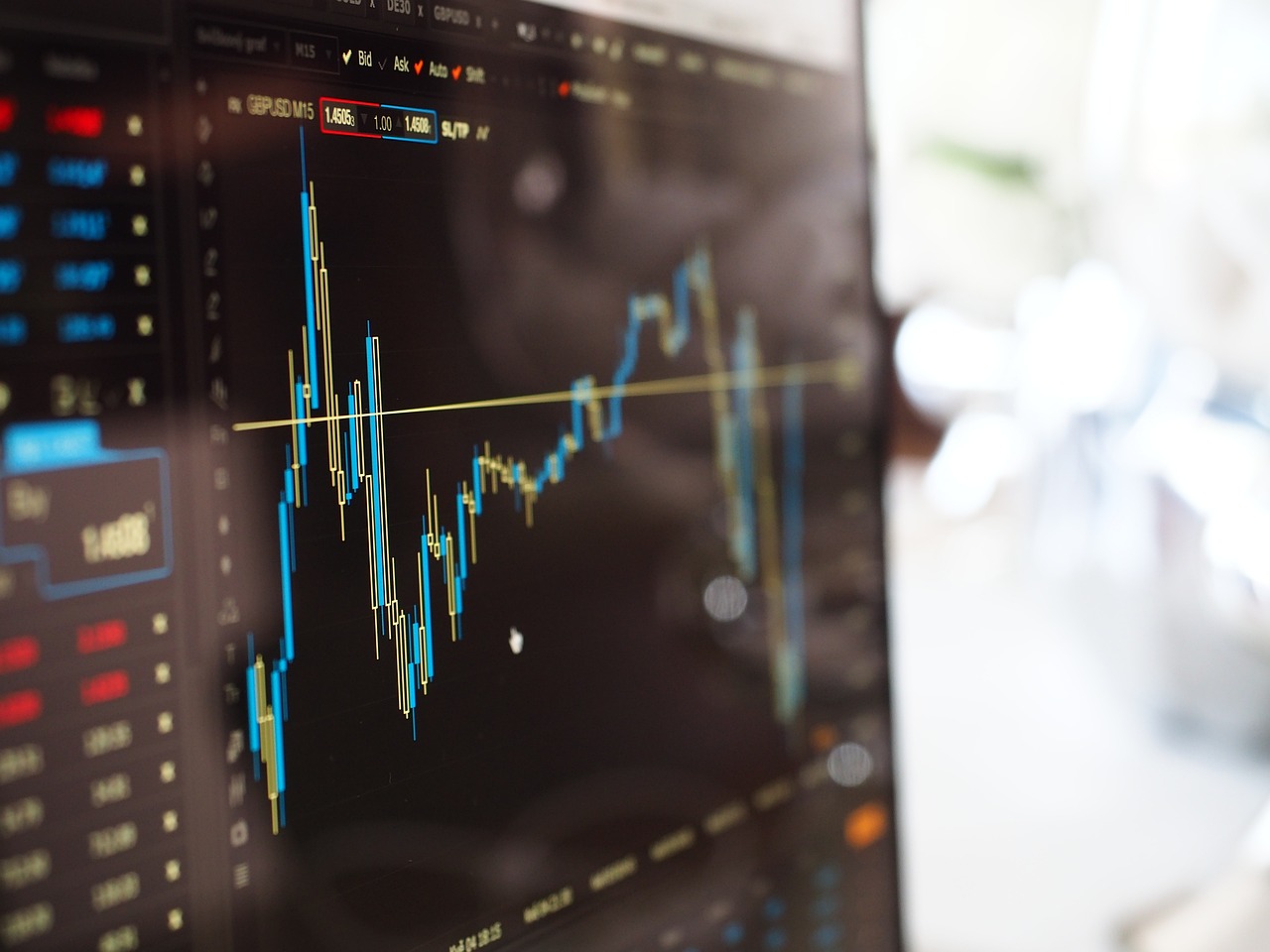
Market Volatility
Market volatility is a term that sends shivers down the spine of many traders, especially in the realm of cryptocurrency. It’s like a roller coaster ride—exciting, unpredictable, and sometimes downright terrifying. In the world of crypto, prices can skyrocket one moment and plummet the next, creating a landscape that is both thrilling and perilous. This inherent volatility is not just a characteristic of the market; it’s a defining feature that shapes trading strategies and outcomes.
For algorithmic trading, this volatility presents both challenges and opportunities. Algorithms designed for trading in stable markets may struggle to keep up with the rapid price swings that are commonplace in cryptocurrencies. Imagine an algorithm programmed to execute trades based on historical data; if the market suddenly shifts due to news or regulatory changes, that algorithm might not react quickly enough, leading to significant losses. Therefore, it’s crucial for traders to develop robust algorithms that can adapt to these rapid changes.
To better understand the impact of market volatility on algorithmic trading, consider the following key factors:
- Price Swings: Cryptocurrency prices can fluctuate dramatically within short periods. Algorithms need to be programmed to recognize and react to these swings effectively.
- Market Sentiment: News, social media, and public sentiment can influence market movements. Algorithms that can analyze sentiment data may have an edge in predicting price changes.
- Liquidity Constraints: During high volatility, liquidity can dry up, making it harder to execute trades without affecting prices. Algorithms must account for liquidity levels to avoid slippage.
Moreover, it’s essential for traders to implement risk management strategies that can mitigate the adverse effects of volatility. This might include setting stop-loss orders or diversifying trading strategies to spread risk across multiple assets. The goal is to create a safety net that allows traders to navigate the unpredictable waters of the cryptocurrency market without capsizing their portfolios.
In summary, while market volatility poses significant challenges for algorithmic trading, it also opens doors for innovative strategies and approaches. Traders who embrace this volatility and adapt their algorithms accordingly can not only survive but thrive in this dynamic environment. It’s all about turning potential chaos into a structured trading strategy that can harness the wild swings of the market.
- What is market volatility? Market volatility refers to the rate at which the price of an asset increases or decreases for a given set of returns. In cryptocurrency, it is characterized by rapid price fluctuations.
- How does volatility affect algorithmic trading? Volatility can create challenges for algorithms, as they must be designed to react quickly to sudden price changes to avoid losses.
- What strategies can mitigate risks associated with volatility? Traders can use stop-loss orders, diversify their portfolios, and implement algorithms that analyze market sentiment to manage risk effectively.
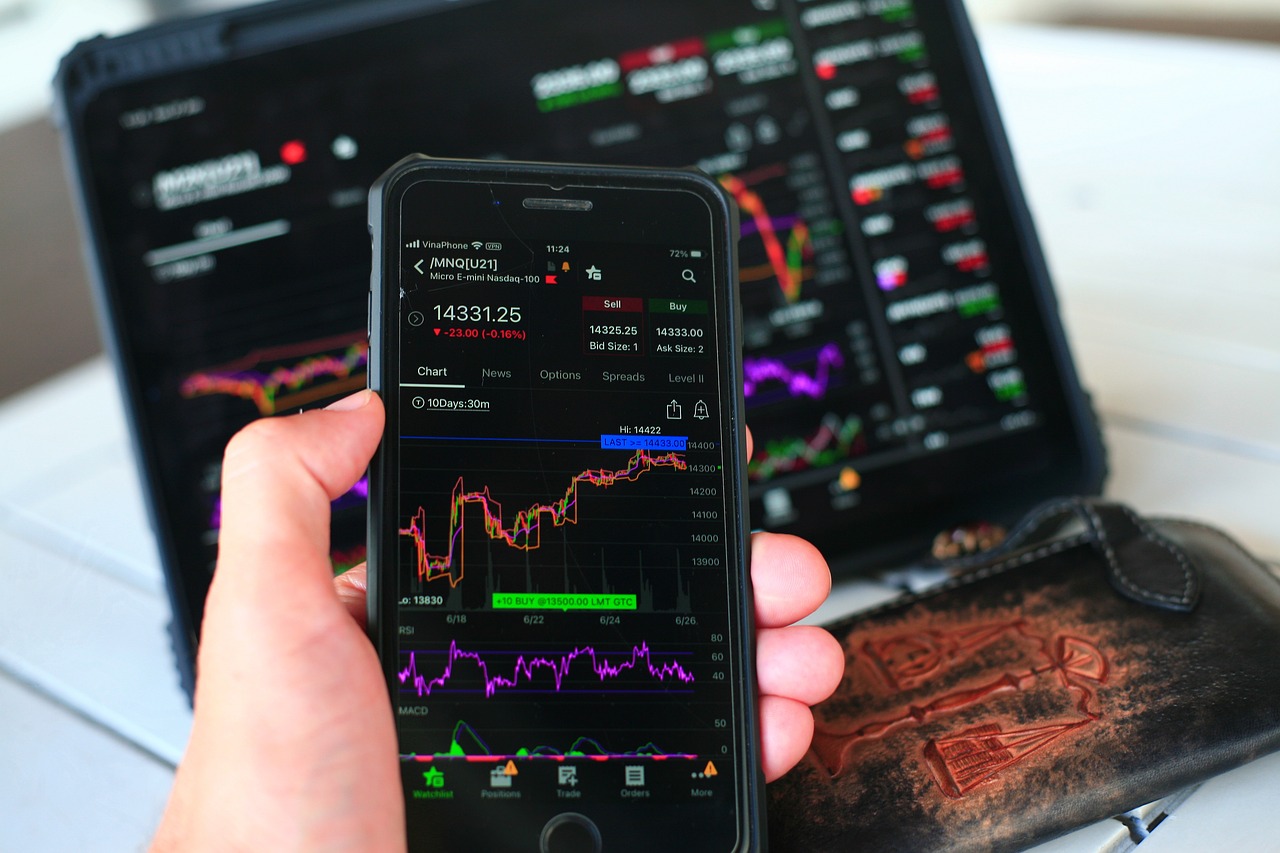
Regulatory Issues
When it comes to algorithmic trading in the cryptocurrency space, navigating the regulatory landscape can feel like trying to find your way through a maze without a map. The rapid evolution of technology and the innovative nature of cryptocurrencies have left many regulatory bodies scrambling to keep up. This creates a complex environment for traders who rely on algorithms to execute their strategies.
One of the primary concerns is that the regulatory frameworks governing cryptocurrency trading are still in their infancy. Different countries have adopted various approaches, ranging from outright bans to welcoming regulations that promote innovation. For instance, while countries like Japan and Switzerland have established clear guidelines, others, such as China, have taken a more restrictive stance. This inconsistency can lead to confusion for algorithmic traders who operate on a global scale.
Moreover, the lack of standardized regulations can expose traders to legal risks. If a trader's algorithm inadvertently violates a law in a particular jurisdiction, the consequences could be severe, including hefty fines or even imprisonment. This uncertainty requires algorithmic traders to stay informed about the regulatory environment in every market they engage with, which can be a daunting task.
Another significant issue is the potential for market manipulation. Regulators are increasingly concerned that algorithmic trading can be used to manipulate prices, especially in the highly volatile cryptocurrency markets. This has led to calls for more stringent oversight and transparency in trading practices. For example, regulators may require firms to disclose their trading algorithms or the strategies they employ, which could impact the confidentiality that many traders rely on.
To further complicate matters, the regulatory landscape is continuously evolving. As new technologies emerge and the market matures, we can expect regulations to change. This means that traders must be adaptable and ready to modify their algorithms to comply with new rules. The challenge lies in balancing the need for compliance with the desire for competitive advantage in a fast-paced trading environment.
In summary, regulatory issues in algorithmic trading are multifaceted and require traders to be vigilant. Understanding the legal landscape, being aware of the risks of market manipulation, and staying adaptable to regulatory changes are essential for success in this dynamic field.
- What are the main regulatory challenges for algorithmic trading in cryptocurrency? The main challenges include inconsistent regulations across countries, legal risks associated with non-compliance, and concerns over market manipulation.
- How can traders stay informed about regulatory changes? Traders can stay informed by following news from reputable financial news sources, subscribing to regulatory updates, and participating in industry forums.
- What impact does regulation have on algorithmic trading strategies? Regulation can necessitate changes in trading strategies to ensure compliance, which might affect the performance of algorithms if not properly managed.
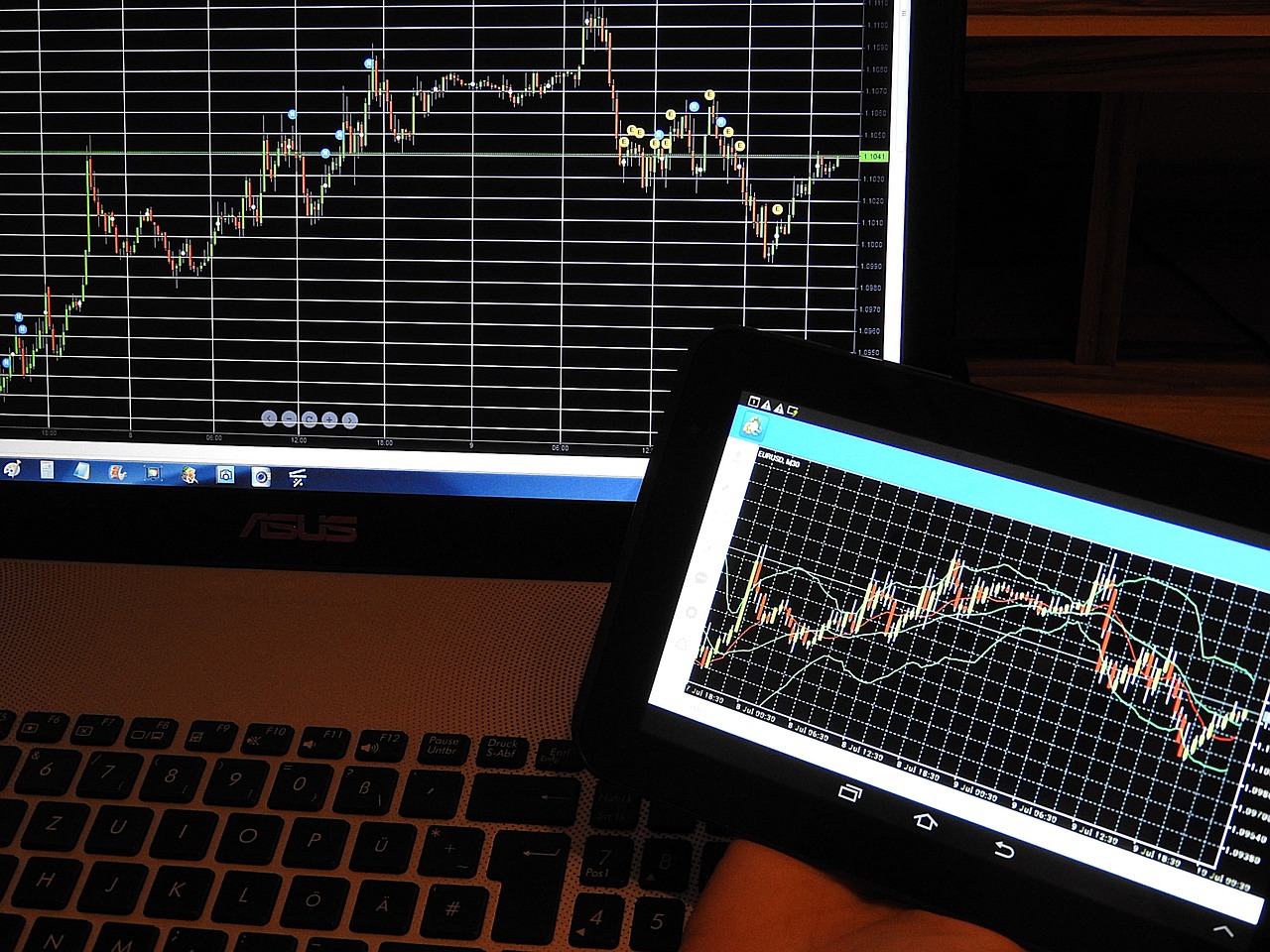
The Future of Algorithmic Trading in Crypto
As we look ahead, the landscape of algorithmic trading in cryptocurrency is brimming with potential and innovation. The rapid evolution of technology is not just a backdrop; it’s the very canvas upon which the future of trading will be painted. Imagine a world where trades are executed at lightning speed, powered by sophisticated algorithms that learn and adapt in real time. This isn’t science fiction; it’s the future that’s unfolding before our eyes.
One of the most exciting prospects for algorithmic trading lies in the integration of artificial intelligence (AI) and machine learning. These technologies can analyze historical data and current market conditions to predict price movements with remarkable accuracy. Think of it as having a super-smart trading partner who never sleeps and can process information faster than any human could dream of. This capability not only enhances trading strategies but also minimizes risks by adapting to market shifts almost instantaneously.
Moreover, the advent of decentralized finance (DeFi) platforms is set to revolutionize the way algorithmic trading operates. DeFi eliminates the need for intermediaries, allowing traders to execute trades directly on blockchain networks. This shift not only enhances transparency but also opens up new avenues for algorithmic trading strategies that leverage smart contracts. Imagine algorithms that can execute trades based on predefined conditions without any human intervention—this is the future of trading autonomy.
However, with great power comes great responsibility. As algorithmic trading becomes more prevalent, the importance of regulatory frameworks will increase. Regulators will need to keep pace with the rapid innovations in trading technology to ensure market integrity and protect investors. This could lead to the development of standardized protocols that govern algorithmic trading practices, which could ultimately foster a safer trading environment.
Additionally, the rise of quantitative trading strategies is expected to play a significant role in the future of algorithmic trading. By analyzing vast amounts of data, these strategies can identify profitable trading opportunities that human traders might overlook. The ability to backtest strategies against historical data allows traders to fine-tune their algorithms, making them more effective in real-world scenarios.
In summary, the future of algorithmic trading in the cryptocurrency market is not just about speed and efficiency; it’s about harnessing the power of technology to create a more dynamic, transparent, and responsive trading environment. As we move forward, it will be crucial for traders to stay informed about technological advancements and regulatory developments to maximize their trading potential.
- What is algorithmic trading? - Algorithmic trading uses computer algorithms to automate trading decisions based on predefined criteria.
- How does algorithmic trading benefit cryptocurrency markets? - It increases efficiency, reduces emotional trading, and enhances market liquidity.
- What are the risks associated with algorithmic trading? - Risks include technical failures, market volatility, and evolving regulatory landscapes.
- What role does AI play in the future of algorithmic trading? - AI can analyze data and adapt trading strategies in real-time, improving accuracy and efficiency.
Frequently Asked Questions
- What is algorithmic trading in cryptocurrency?
Algorithmic trading in cryptocurrency refers to using computer algorithms to execute trades automatically based on predefined criteria. This method allows traders to capitalize on market opportunities much faster than manual trading, making it particularly useful in the fast-paced world of cryptocurrencies.
- What are the main benefits of algorithmic trading?
Some key benefits of algorithmic trading include:
- Speed: Trades can be executed within milliseconds, allowing traders to react to market changes instantly.
- Efficiency: Automating trades reduces the time spent on manual analysis and execution.
- Data Analysis: Algorithms can analyze vast amounts of market data to identify trends and patterns, aiding in informed decision-making.
- How does algorithmic trading improve market liquidity?
By automating trades, algorithmic trading helps maintain market liquidity. It ensures that assets can be bought or sold quickly without causing significant price fluctuations, which is vital in the often volatile cryptocurrency markets.
- What risks are associated with algorithmic trading?
While algorithmic trading offers many advantages, it also comes with risks such as:
- Technical Failures: Glitches or malfunctions in trading algorithms can lead to significant financial losses.
- Market Volatility: Rapid price changes can affect the effectiveness of trading algorithms, requiring them to be robust and adaptable.
- Regulatory Challenges: The evolving regulatory landscape for cryptocurrencies can create compliance issues for algorithmic traders.
- What is the future of algorithmic trading in cryptocurrency?
The future of algorithmic trading in cryptocurrency looks promising, with advancements in technology likely to enhance trading strategies. Emerging trends, such as artificial intelligence and machine learning, are expected to further refine algorithmic trading, making it even more efficient and effective in navigating the complexities of the crypto market.



















